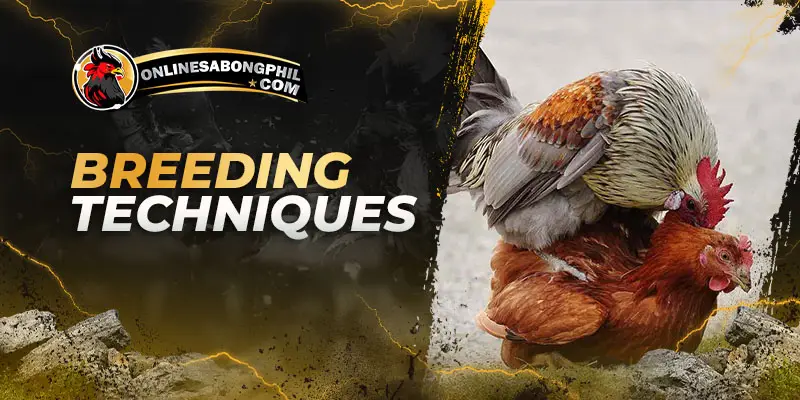Gamefowl breeding is a demanding but rewarding pursuit for those interested in raising top-quality birds. This guide delves into the essential aspects of breeding gamefowl, from acquiring knowledge to selecting breeding stock and chick management.
Getting Started with Gamefowl Breeding
Before you even consider acquiring breeding stock, it’s vital to equip yourself with the necessary information. Here’s a detailed roadmap to guide your learning journey:
1. Observe, Watch, and Learn from Experienced Breeders
There’s no substitute for firsthand experience. Seek out reputable breeders in your area and inquire about observing their breeding practices. Watch how they handle their birds, manage their breeding pens, and select their broodstock. Here are some pointers to maximize your learning:
- Ask Permission: Always approach breeders with respect and request permission to observe their operations.
- Focus on Details: Pay close attention to how they care for their gamefowl at every stage, from feeding and housing to training and conditioning.
- Take Notes: Jot down key observations and ask questions about their breeding philosophy, selection criteria, and any challenges they encounter.
2. Deepen Your Knowledge: Research Extensively
Expand your practical observations with deep study. Use a variety of resources for getting an in-depth knowledge of gamefowl breeding such as:
- Books: Numerous books delve into the history, breeds, breeding techniques, and health care of gamefowl. Look for publications by reputable authors and organizations.
- Articles: Online articles and journals offer valuable insights into specific aspects of breeding, from bloodline analysis to chick management.
- Videos: Educational videos on platforms like YouTube can visually demonstrate breeding techniques, handling practices, and common challenges.
Planning and Budgeting
Before acquiring birds, establishing a well-defined plan and adhering to a realistic budget is crucial for long-term success in gamefowl breeding. Here’s a breakdown of key considerations:
1. Start Modestly and Scale Up Strategically:
- Begin Small: As a beginner, resist the urge to acquire a large flock. Start with a manageable number of birds that aligns with your available space, resources, and time commitment. This allows you to gain experience in breeding, handling, and bird care without feeling overwhelmed.
- Planned Growth: As you gain knowledge and confidence, gradually increase the size of your breeding operation. Selective breeding allows you to control the number of offspring while focusing on desirable traits. Hatching only a portion of your eggs each season helps manage population growth strategically.
2. Implement a Culling Strategy for Quality Control:
Regularly evaluate your birds for physical defects, health issues, or undesirable behavioral characteristics. These could include deformities, chronic illnesses, or lack of aggression (essential for fighting breeds). Be prepared to remove birds that exhibit inferior traits from your breeding program. This prevents these traits from being passed on to future generations and ensures the overall quality of your bloodline.
3. Prioritize Quality Over Quantity:
- Focus on Genetics: Don’t be tempted to simply increase the number of birds you breed. The true value lies in the genetic potential of your birds. Invest in acquiring high-quality breeding stock with proven bloodlines and desirable characteristics.
- Consistent Traits: A smaller flock of birds with consistent, superior traits is far more valuable than a large group with a mix of qualities. This focus on quality ensures predictable outcomes in your breeding program.
4. Prepare a Dedicated Breeding Area:
- Suitable Yard Space: Ensure your yard provides ample space for your birds to exercise, socialize, and exhibit natural behaviors. Factors to consider include fencing, drainage, protection from predators, and harsh weather conditions.
- Proper Housing: Provide secure and well-ventilated housing for your breeding stock. Separate breeding pens for roosters and hens are essential to control breeding and maintain order. Nesting boxes and perches should be included in the design.
By following these detailed planning and budgeting strategies, you can lay the groundwork for a sustainable and successful gamefowl breeding operation.
Breeding Techniques
Understanding and implementing different breeding techniques is a cornerstone of successful gamefowl breeding. These techniques allow you to influence the genetic makeup of your birds, leading to offspring with specific characteristics.
1. Strain: Maintaining Consistent Characteristics
Family Lineage: A strain refers to a family line of gamefowl bred over generations to exhibit distinct physical features and consistent behavioral traits. These characteristics can include size, plumage color, body type, and fighting style.
Origin of Breeds: The Wild Red Jungle Fowl of Southeast Asia is the origin of all recognized gamefowl breeds. Breeders have chosen these breeds to have specific desirable characteristics.
2. Breeding Methods: Tailoring Your Approach
The choice of breeding method depends on your goals and the specific traits you aim to cultivate in your birds. Here’s an in-depth look at two common methods:
Single Breeding:
Controlled Mating: A single rooster is bred with a single hen or rotated with a small group of individually penned hens. This controlled approach allows for precise tracking of parentage and ensures offspring inherit traits from both the chosen rooster and hen.
Benefits: This method is ideal for maintaining the characteristics of a particular bloodline and can be used to solidify desired traits within a strain.
Group Breeding:
Multiple Hens: A single rooster is bred with a small group of hens kept together in one enclosure. This method allows for natural breeding behavior and can be less time-consuming than single breeding.
Choosing the Right Method:
The optimal breeding method depends on your specific breeding goals. If you aim to preserve a rare bloodline or solidify specific traits, single breeding is preferred. If your focus is on quantity or producing fighting cocks with diverse characteristics, group breeding might be a suitable option.
Tools for Shaping Your Flock
Refining a Bloodline: This technique involves breeding a rooster to closely related hens within the same bloodline, such as his mother, grandmother, or daughters. This intensifies specific traits within the strain.
- Benefits: Line breeding is effective for maintaining the unique characteristics of a prized bloodline and solidifying desirable traits like aggression, stamina, or physical attributes.
- Cautions: Excessive line breeding can lead to health problems due to a narrowed gene pool. Breeders need to be mindful of introducing new blood periodically.
- Concentrating Traits: This method involves breeding siblings (brother to sister) to concentrate specific desirable traits within a bloodline. It’s a powerful tool for rapidly fixing desired characteristics.
- Extreme Caution Advised: Inbreeding carries significant risks of genetic defects and health problems. It should only be performed by experienced breeders who are well aware of the possible implications. Use inbreeding carefully and strategically.
- Introducing New Blood: This technique involves breeding birds from different strains within the same breed. It introduces new genetic material to the breeding pool.
Sex Determination and Breeding Age
Imagine tiny instructions called chromosomes that determine your chick’s sex. Dads (roosters) always contribute one sex chromosome. Moms (hens), however, contribute theirs to only about half the eggs they lay.
Double Trouble = Male Chick (Stag): If a chick gets a chromosome from both mom and dad, it hatches as a rooster (stag).
Single Chromosome = Female Chick (Pullet): If a chick only receives a chromosome from dad, it hatches as a hen (pullet).
Choosing Breeders for Strong Chicks:
The age and experience of your breeding pair can influence the success of your hatch. Here’s a tip:
Proven Moms and Young Dads: Consider breeding a hen who has already raised chicks successfully (at least two years old) with a younger rooster. This pairing can sometimes lead to a stronger hatch.
Conclusion
Remember that raising healthy chicks is just as important as breeding strong birds. Provide them with a nutritious diet and a comprehensive vaccination program to safeguard them from avian diseases. Finally, meticulous record-keeping is key. Assign unique codes to breeding pairs and mark chicks for future reference.
Techniques like toe punching and nose marking can help you track lineage and identify breeding combinations that consistently produce superior offspring. This record-keeping allows you to refine your breeding program over time, ensuring long-term success in gamefowl breeding.
Visit us at onlinesabongphil.com for more guides and tips!



